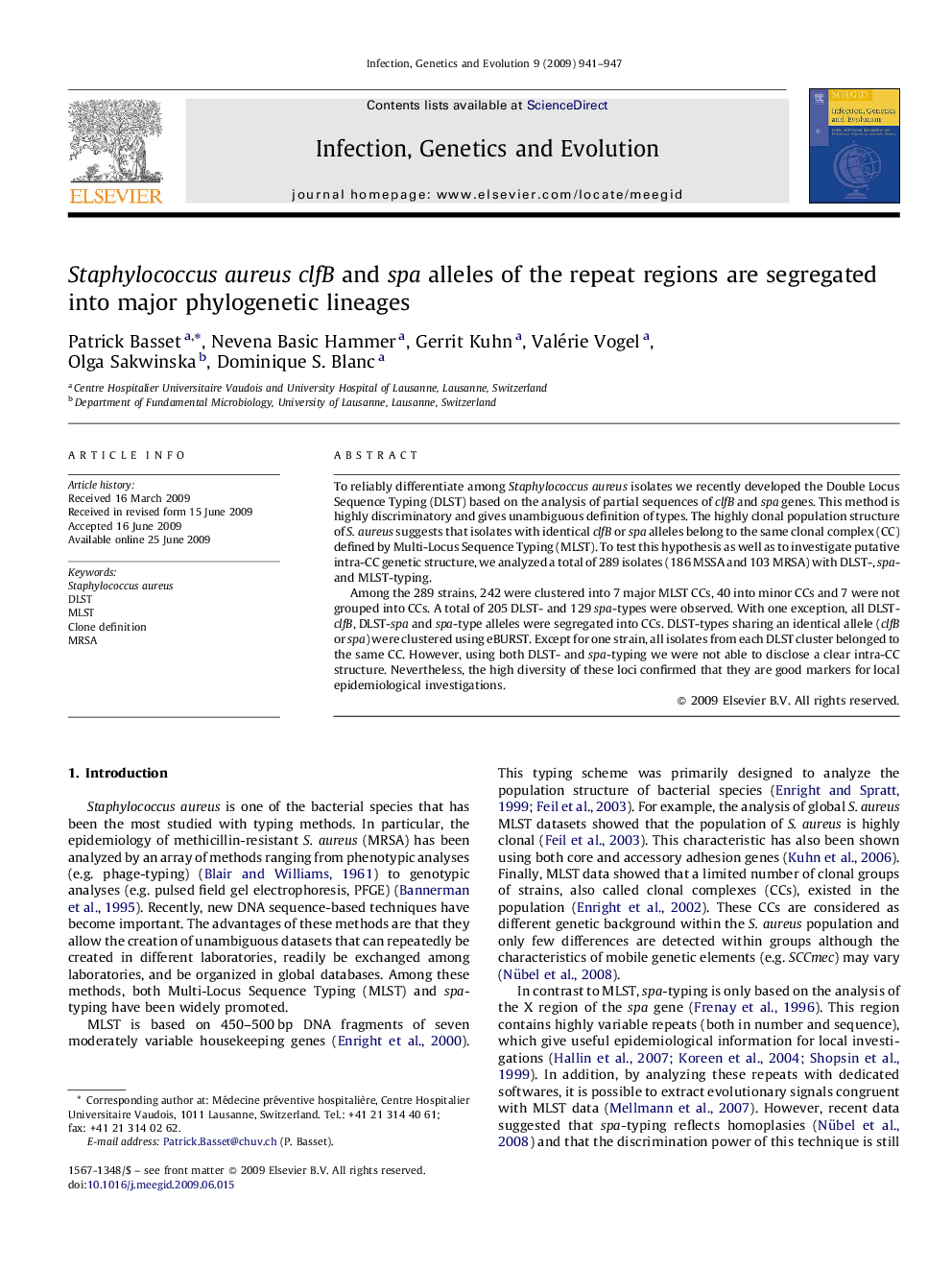| Article ID | Journal | Published Year | Pages | File Type |
|---|---|---|---|---|
| 2823367 | Infection, Genetics and Evolution | 2009 | 7 Pages |
To reliably differentiate among Staphylococcus aureus isolates we recently developed the Double Locus Sequence Typing (DLST) based on the analysis of partial sequences of clfB and spa genes. This method is highly discriminatory and gives unambiguous definition of types. The highly clonal population structure of S. aureus suggests that isolates with identical clfB or spa alleles belong to the same clonal complex (CC) defined by Multi-Locus Sequence Typing (MLST). To test this hypothesis as well as to investigate putative intra-CC genetic structure, we analyzed a total of 289 isolates (186 MSSA and 103 MRSA) with DLST-, spa- and MLST-typing.Among the 289 strains, 242 were clustered into 7 major MLST CCs, 40 into minor CCs and 7 were not grouped into CCs. A total of 205 DLST- and 129 spa-types were observed. With one exception, all DLST-clfB, DLST-spa and spa-type alleles were segregated into CCs. DLST-types sharing an identical allele (clfB or spa) were clustered using eBURST. Except for one strain, all isolates from each DLST cluster belonged to the same CC. However, using both DLST- and spa-typing we were not able to disclose a clear intra-CC structure. Nevertheless, the high diversity of these loci confirmed that they are good markers for local epidemiological investigations.
